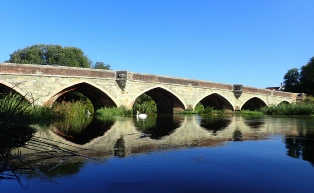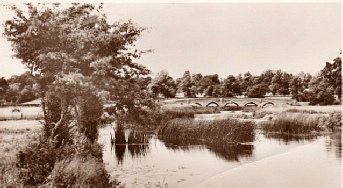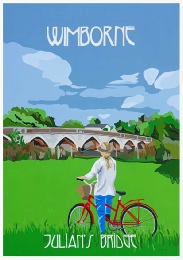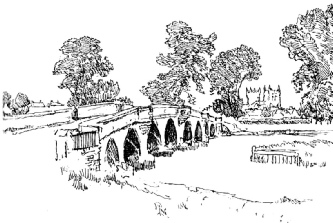





History Trail
 Town Map
Town Map

Tree Trail






Julians Bridge -
Wimborne certainly benefited form the arrival of the railways in 1847 -
In his writings (1535-
none of which includes the recent addition of an apostrophe! As the bridge has not been associated with a Julian this seems to have been added with the advent of social media and a misunderstanding that the name should have that unnecessary addition. Sadly even the Ordnance Survey maps have followed that trend in the 21st Century -
In those early years of the 19th century it seems that the County employed individuals on a bridge by bridge basis [to do repairs]; then in 1809 ‘Mr Dyson’ was appointed surveyor. His name also appears on the foundation stone beneath Canford Bridge on the road out of Wimborne heading towards Merley and Poole -
[This stone is beneath the bridge by the waterline so maybe check it out when next hiring a rowing boat or canoe from Dreamboats] . He appears to have been dismissed at some stage, though when is not clear, and Dorset county seems to have reverted to its old practices of employing people in an ad hoc way.
(https://www.childokeford.org/hayward-
There is a reference to our bridge in research of repairs In 1821 … This was associated with repairs to Hayward Bridge at Child Okeford …
[ Hayward Bridge -
“Thomas Woolfrey got £3 [£172] for repairing tools used at the bridge whilst Robert West was paid 18s 6d [£53] for “work done and performed and materials used in repairing the Wheelbarrows of and belonging to the County” together
with another £91 [£5k] for erecting a post and railing fence.
Some material remained after the building of the bridge and William Melmoth was paid a pound to take some of it to the Julian Bridge at Wimborne and two pounds to take the remainder to Kings Mill Bridge at Sturminster. [White Mill Bridge?)
Finally £9 [£500] was paid to the Clerk of the Peace Thomas Fox “for respiting [sic] and discharging the Indictment of Hayward Bridge”.
So, to look at the list of names that the bridge has been known by there are :
Juliane bridge 1535–43
(in the writings of John Leland (He was the representative for Henry VIII at the time of the dissolution of the monasteries)
Jelian bridge 1591
Gilian bridge 1593
Julian Bridge 1822
Julien Bridge 1869
& Julian Bridge
And just downstream of the bridge you can’t have failed to see a distinct small tree-
This is known as Julian Island and may be the reason we have a Julians Bridge at all.
In the records of the Almshouses (only 400 metres away across what would then have just been watermeadows there is note of a witness -
maintained -
benefactors again.
Since Julians Bridge originated as a structure in the 1400s -


///cakes.mercy.broadens





1961

